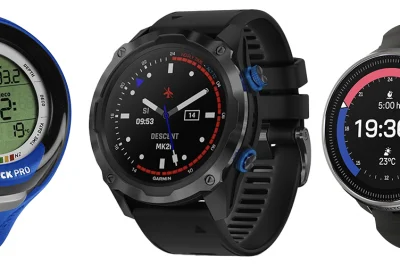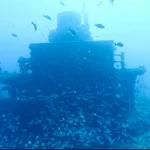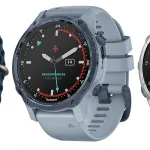Decoding Dive Computer Features: What Matters Most

Table of Contents
- Decoding Dive Computer Features: What Matters Most
- Avoiding Common Buying Mistakes
- The Evolution of Dive Computer Technology in 2025
- Price Versus Performance: Is Your Dive Computer Worth It?
- Top Dive Computers for 2025: The Unbiased Picks
- The Truth About Dive Computer Reviews: What Shops Won’t Tell You
- Future-Proofing: Choosing a Dive Computer That Lasts
- Testing the Waters: Brands That Stand Out for Quality and Reliability
Introduction
In the rapidly evolving world of scuba diving, choosing the right dive computer is crucial for safety and performance. This guide will explore the latest dive computers available in 2025, focusing on the best options for divers of all experience levels.
Decoding Dive Computer Features: What Matters Most
Avoiding Common Buying Mistakes
When diving into the world of underwater navigation, many divers make critical errors when purchasing dive computers. Avoiding these mistakes can not only enhance the diving experience but also ensure safety beneath the waves.
- Ignoring Budget Priorities: Failing to establish a budget reflecting actual diving needs can lead to overspending on unnecessary features.
- Overlooking Battery Maintenance: Be aware of whether the dive computer has user-replaceable batteries or requires factory servicing.
- Neglecting Conservatism Levels: Understanding a computer’s decompression algorithm conservatism is critical for safe diving practices.
- Ignoring Personalisation & Comfort Needs: Consider factors such as display readability and ergonomics when selecting a dive computer.
- Choosing Features Without Training: Opting for advanced features like air integration without proper knowledge can lead to potential misuse.
Avoiding Common Buying Mistakes
The dive computer industry is currently experiencing transformative advancements that enhance safety, reliability, and user experience for divers. In 2025, significant innovations focus on technology integration, improved performance, and user-friendly features that cater to both recreational and technical divers. Here are the key advancements highlighted:
Next-Generation Display Technology
- OLED Colour Displays: Dive computers now equipped with OLED displays provide superior brightness and contrast, enhancing readability in various lighting conditions.
- Segmented Chip-On-Glass Technology: Models like the Mares Quad 2 use this technology to improve screen reflection reduction and visibility underwater.
Advanced Decompression and Gas Algorithms
- Bühlmann ZH-L16C Algorithm: This widely used algorithm allows divers to customise gradient factors for precise decompression calculations.
- AI-Powered Dive Planning: Some models feature AI algorithms adapting to real-time dive conditions to optimise safety and efficiency.
- Standardised Algorithms: Emphasis on compatibility with popular planning software ensures predictability in dive profiles.
Multi-Gas and Trimix Capabilities
- 5-Gas Mix Support: Advanced models can accommodate up to five gas mixes, offering flexibility in various diving scenarios.
- Altitude Adaptation: Automatic altitude pressure adjustment ensures safety during high elevation dives.
Connectivity and Integration
- Bluetooth Syncing: Dive computers supporting Bluetooth connectivity enable effortless data sharing and synchronisation with mobile devices.
- Integration with Underwater Drones: Real-time environmental monitoring is now possible through partnerships with remote-operated underwater vehicles.
Eco-Conscious Design and Workflow Optimisation
- Surface Interval Planning: Built-in features calculate safe surface intervals, enhancing recovery protocols for safety.
- Sustainability Focus: Increasing adoption of eco-friendly materials and energy-efficient designs by manufacturers reduces environmental impact.
These advancements mark a significant milestone, merging precision, interoperability, and sustainability to cater to modern divers’ diverse needs.
The Evolution of Dive Computer Technology in 2025
Dive computers vary significantly in price and capabilities, catering to different diving needs and budgets. Below is a structured analysis of top models across price tiers, highlighting their features, costs, and ideal user groups.
Price Tiers and Key Models
| Model | Price | Algorithm | Display | Battery Life | Ideal User |
|---|---|---|---|---|---|
| Shearwater Peregrine | $550 | Bühlmann ZH-L16C | 2.2″ Colour LCD | 30 hours | Technical/Advanced |
| Garmin Descent G1 | $449.99 | Custom | Monochrome | 25 hours | Multisport/Travel |
| Mares Puck 4 | $389.95 | Bühlmann ZH-L | 1-button interface, large digits | Replaceable | Recreational/Students |
| Suunto Zoop | ~$250 | Suunto RGBM | Basic LCD | Replaceable | Entry-Level |
| Suunto D6i Novo | ~$649 | Suunto RGBM | Air-integrated, Digital Compass | Rechargeable | Intermediate/Advanced |
Value Analysis: The Peregrine and Descent G1 offer premium features (colour displays, advanced algorithms, GPS) but cost over $450. Budget options like the Mares Puck 4 and Suunto Zoop provide reliable essential functions at a fraction of the price. Additionally, long-term costs—including accessories and maintenance—should be factored in. For example, total ownership of the Peregrine is about $700 over five years, compared to approximately $400 for the Zoop.
Performance Highlights by Use Case
Technical/Cave Diving
Shearwater Peregrine: Features the Bühlmann ZHL-16C algorithm for reliable decompression calculations and a full-colour LCD for enhanced visibility during complex dives like cave navigation, with a depth rating of 120m.
Travel/Liveaboard Trips
Garmin Descent G1: Suitable for multisport activities, includes GPS tracking and boasts a waterproof design, ideal for travel with detailed dive logging capabilities.
Recreational Diving
Mares Puck 4 & Suunto Zoop: Simple interfaces and basic decompression support make these cost-effective choices for recreational divers and students.
Specialised Recommendations
| Use Case | Recommended Model | Key Advantage |
|---|---|---|
| Cold Water | Garmin Descent G1 | Robust build, reliable operation. |
| Photography | Shearwater Peregrine | Colour screen, intuitive controls. |
| Training | Suunto Zoop/Mares Puck 4 | Single-button simplicity, low cost. |
Budget vs Premium Investment: Premium dive computers like the Peregrine and Suunto D6i Novo excel in technical diving due to their superior algorithms and display quality. However, budget models like the Mares Puck 4 and Suunto Zoop provide essential tracking functions at a significantly lower cost, sufficient for most recreational divers.
Price Versus Performance: Is Your Dive Computer Worth It?
Dive Computer Categories & Top Models
As divers look into 2025, several exceptional dive computers have emerged, each tailored for different needs and experiences. The best models can be categorised as follows:
- Technical/Recreational: Shearwater Perdix 2 & Peregrine
- Watch-Style: Suunto D5
- Smartwatch Integration: Garmin Descent Mk2i & Apple Watch Ultra
- Budget Options: Mares Puck 4 & Aqua Lung i470TC
Technical & Recreational Performance
- Shearwater Perdix 2
- Algorithm: Utilises Bühlmann ZH-L with gradient factors to ensure precise decompression.
- Display: Features a customisable full-colour AMOLED screen with excellent low-light visibility.
- Depth Rating: Rated up to 120m, extensively tested in cave conditions.
- Connectivity: Bluetooth sync capability with the Shearwater app for effortless dive logs.
- Shearwater Peregrine
- User Experience: Designed with an intuitive two-button interface and a 2.2″ full-colour display.
- Algorithm: Shares the same Bühlmann ZH-L algorithm as the Perdix 2, suitable for both recreational and technical diving.
- Garmin Mk2i
- Specialised Testing: Achieved top scores for technical diving with dual algorithms (Bühlmann/ZHL-16).
- Unique Feature: GPS accuracy within 2m and depth sensor precision of ±0.1m.
Watch-Style & Smartwatches
- Suunto D5
- Display: A fashionable digital watch face that’s easily readable in sunlight.
- Algorithm: Implements Suunto’s Reduced Gradient Bubble Model for safety margins.
- Battery: Equipped with a long-lasting battery powered by replaceable 2AA cells.
- Garmin Descent Mk2i
- Integration: Combines full smartwatch features with dive functionalities.
- Battery Life: Lasts up to 20 days in smartwatch mode or 30 hours in dive mode.
- Apple Watch Ultra
- Niche Use: Incorporates a built-in dive computer mode, connecting seamlessly to the Apple ecosystem.
- Limitation: Lacks air integration and isn’t recommended for technical diving.
Budget Options
- Mares Puck 4
- Algorithm: Features the Bühlmann ZH-L algorithm with safety-stop alerts and a bottom timer.
- Connectivity: Bluetooth capability for syncing with the Mares app, tracking up to 100 dives.
- Ergonomics: Designed for ease of use with a single-button operation and a replaceable battery.
- Aqua Lung i470TC
- Air Integration: Offers an affordable solution for monitoring air pressure via a hose connection.
- Limitation: Its conservative algorithm may lead to early dive terminations, necessitating careful monitoring.
Performance Metrics Comparison
| Model | Algorithm | Display Tech | Depth Rating | Connectivity | Key Metrics | Price |
|---|---|---|---|---|---|---|
| Shearwater Perdix 2 | Bühlmann ZH-L | AMOLED Customisable | 120m | Bluetooth | Exceptional technical performance | Premium |
| Suunto D5 | Suunto RGBM | LCD Matrix | 100m | No | Stylish format for casual diving | Mid-Range |
| Garmin Mk2i | Bühlmann/ZHL-16 | Colour AMOLED | 80m | GPS/Bluetooth | Comprehensive smartwatch integration | High |
| Mares Puck 4 | Bühlmann ZH-L | LCD Single Button | 100m | Bluetooth | Cost-effective with reliable features | $389.95 |
| Aqua Lung i470TC | Conservative Air-Nitrox | LCD | 100m | Air Integration | Affordable air pressure monitoring | Mid-Range |
Critical Testing Insights
- Algorithm Safety: Leading brands employ similar decompression algorithms, affirming that higher prices do not inherently mean better safety.
- Screen Readability: Models like Shearwater Perdix 2 excel in low-light conditions.
- Ergonomics: Devices like Garmin Mk2i score highly for button comfort and compatibility with various strap designs.
- Dive Logging: The Mares Puck 4 and Shearwater series shine in tracking dives with Bluetooth connectivity.
Top Dive Computers for 2025: The Unbiased Picks
Understanding the nuances behind dive computer reviews is crucial for making informed purchasing decisions, especially in a market flooded with options. Many misconceptions can cloud the judgment of both novice and experienced divers, leading them to overlook essential features or unnecessarily inflate their budgets.
Common Myths Surrounding Dive Computer Reviews
- Myth: All Technical Dive Computers Are Created Equal. Many devices advertise themselves as suitable for technical diving; however, they often employ proprietary decompression algorithms. These might not integrate effectively with established planning software.
- Myth: Recreational Divers Need High-End Models. A common belief is that only the most expensive dive computers deliver reliable features. In reality, budget-friendly options can provide adequate functionality for recreational diving.
- Myth: Rechargeable Batteries Are Less Reliable. There’s a misconception that models with rechargeable batteries are prone to failure. Modern designs minimise waste while maintaining performance.
- Myth: Larger Screens Always Offer Better Readability. While a bigger display might seem advantageous, usability is more vital than screen size. High-contrast displays can be equally effective underwater.
- Myth: Firmware Updates Are Overrated. Regular firmware updates can significantly enhance a dive computer’s functionality by incorporating safety patches and improvements.
The Truth About Dive Computer Reviews: What Shops Won’t Tell You
Core Features of Future Dive Computers
Choosing a dive computer involves understanding the essential features that ensure safety and accuracy during your dives. As of 2025, here are the core features you should look for:
- Ascent Rate Monitoring: This feature alerts divers to excessively rapid ascents, preventing decompression sickness.
- Nitrox Compatibility: Adjusts dive plans based on oxygen levels in the mix used, optimising bottom times.
- Bluetooth/Data Upload: Enabling seamless transfer of dive logs to apps or PCs facilitates detailed analysis of dive data.
- Safety Stops: Providing countdowns for mandatory safety stops is essential for safe nitrogen reduction.
Advanced Features for Enhanced Diving
Modern dive computers come equipped with additional advanced features:
- Underwater Messaging: Devices allow diver-to-diver communication using technologies like sonar for message sharing.
- 3D Dive Tracking: Helps divers visualise their dive paths with GPS and sensors for enhanced post-dive analysis.
- Onboard O₂ Analyser: Allows for quick gas analysis ensuring mix safety before diving.
- Air Transmitters: Monitor tank pressure in real time to estimate remaining air supply.
- Multiple Gas Support: Essential for technical diving, enabling different gas mixes during a single dive.
Smartwatch Integration and Usability
- Smartwatch Features: Includes multiple fitness modes, offering versatility for various activities.
- Enhanced Battery Life: Crucial for multi-day dive trips, extending usability.
- Big Numbers Mode: Improves readability by enlarging critical data like depth and time.
- Haptic Feedback: Provides vibrating alerts to ensure divers receive critical warnings even in noisy conditions.
Tech Diving Capabilities
- Increased Depth Ratings: Models accommodate deeper dives for those with advanced certifications.
- Trimix Support: Essential for divers using multiple gas combinations for deep explorations.
Investing in these features enhances diving experiences and ensures preparedness for various diving conditions now and in the future.
Future-Proofing: Choosing a Dive Computer That Lasts
Top Dive Computer Brands for 2025
When searching for the perfect dive computer, understanding which brands stand out for their quality and reliability is pivotal. Based on comprehensive reviews and user experiences, several brands have emerged as leaders in the dive computer market for 2025.
Shearwater
Key Models: Perdix 2 (overall winner), Peregrine (most popular), Teric (watch-style).
- Reliability: Renowned for advanced algorithms that cater to various diving scenarios.
- Performance: The Perdix 2 excels in technical diving, allowing for gradient factor customisation.
- Accessibility: The Peregrine offers a budget-friendly yet robust option for new divers.
Suunto
Key Models: Ocean, EON Core, Vyper Novo, D6i.
- Intuitive Design: The Ocean model features a user-friendly touchscreen integrating multiple sports profiles.
- Advanced Features: EON Core boasts wireless transmitters, Bluetooth connectivity, and USB recharging capabilities.
- Durability: The D6i is known for its high-quality metal casing and built-in digital compass.
Aqua Lung
Key Models: i470TC (budget air-integrated), i300C (budget), i450T (mid-range).
- Affordability: Models like the i300C offer fundamental features at accessible price points.
- Longevity: Users report models often last over a decade, providing excellent value.
Garmin
Key Model: Descent Mk2i.
- Smartwatch Integration: Merges diving functionalities with fitness tracking and GPS.
- Multi-Use: Ideal for those prioritising both diving and surface sports.
Apple
Key Model: Apple Watch Ultra.
- iOS Ecosystem: Seamlessly integrates with iPhone apps, enhancing functionality.
- Versatility: Serves as a fitness tracker along with limited dive tracking capabilities.
Comparison of Top Brands
| Brand | Model | Key Features | Price Range |
|---|---|---|---|
| Shearwater | Perdix 2 | Gradient factor, technical diving modes | High-end |
| Suunto | Ocean | Touchscreen, 95+ sport profiles | $899–$1,199 |
| Aqua Lung | i470TC | Air integration, budget-friendly | Mid-range |
| Garmin | Descent Mk2i | Smartwatch + GPS, multipurpose | Premium |
| Apple | Watch Ultra | iOS sync, fitness/diving hybrid | High-end |
The 2025 market offers a diverse range of dive computers suitable for every diver’s needs and budget. Whether you are a novice looking for affordability or an experienced diver seeking advanced features, brands like Shearwater, Suunto, Aqua Lung, Garmin, and Apple offer options excelling in reliability and performance.
Testing the Waters: Brands That Stand Out for Quality and Reliability
2025 Dive Computer Features Comparison
As divers venture into selecting a dive computer for 2025, understanding the advancements and features integral to modern models is crucial. With a focus on user needs and diving conditions, manufacturers have introduced significant innovations aimed at enhancing safety and usability.
Key Innovations
- Underwater Messaging/Tracking: Devices like the Garmin T2 transceiver allow for preset messages up to 30 meters underwater.
- Onboard O2 Analyser: The DSX dive computer stands out with its integrated nitrox analyser, streamlining gas mix analysis.
- Accessibility Features: Enhanced usability with options like ‘Big Numbers’ mode and haptic feedback for divers with visual or hearing challenges.
Model Comparison by Tier
Entry Level
- Suunto Zoop: A basic wrist model suitable for recreational diving. Price: ~£199.
- Aqua Lung i300: Offers essential diving functions with a robust build. Price: ~£191.
Intermediate Level
- Suunto Vyper Novo: Includes air integration features, user-friendly. Price: ~£325.
Advanced/Technical Level
- Suunto DX: Tailored for technical and rebreather diving with sophisticated features. Price: ~£710.
Advanced Features
- Algorithm Sophistication: Models like Shearwater use advanced algorithms for precise decompression calculations.
- Technical Capabilities: Support for sophisticated diving setups, including rebreathers and multiple gas mixtures.
- Usability Enhancements: Features like haptic feedback facilitate communication and alerts in low-visibility conditions.
Sources
- Bluewater Photo Store – The Best Dive Computers in 2025
- Data Insights Market – Dive Computer Trends in 2025
- Diver News Wire – Mares Quad 2 Launch
- Divers Direct – Buying a Dive Computer
- Oyster Diving Shop – Guide to Scuba Diving Computers 2025
- Scuba Diving Smiles – Scuba Diving Computer
- Scuba Forge – Expert Dive Computer Comparison
- ScubaBoard – So, You Want to Buy a New Computer?





